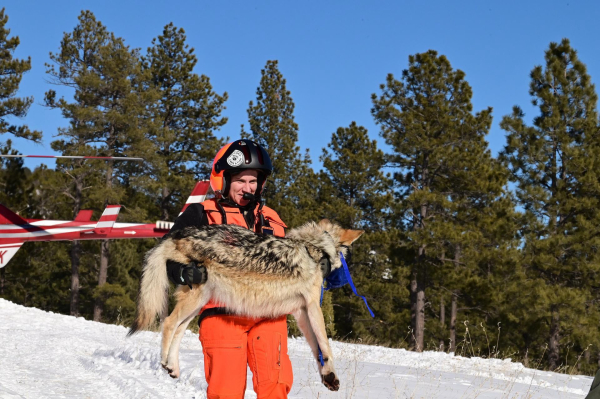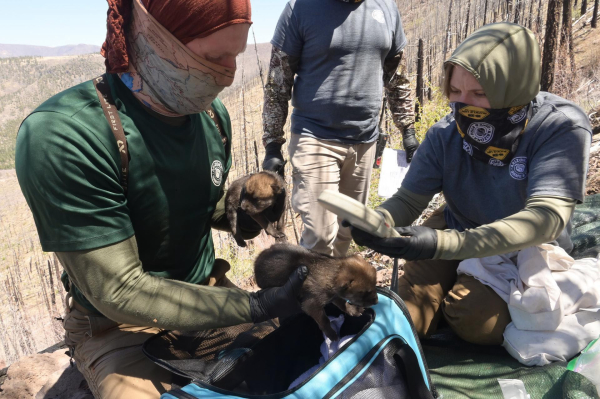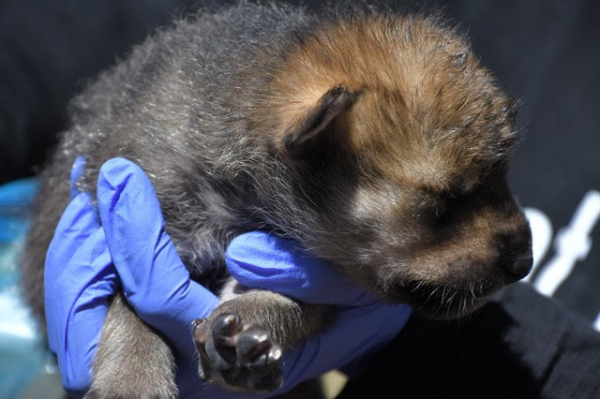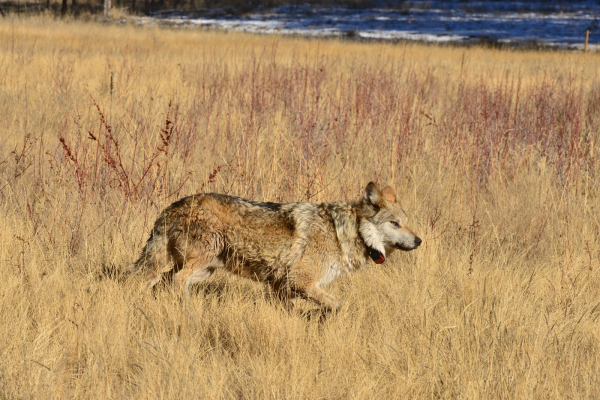Arizona-New Mexico Mexican Wolf Population Grows in 2013

GW: If only an animal-rights activist would ever agree on the definition of recovery…
PHOENIX — During its annual year-end population survey, the Mexican Wolf Interagency Field Team (IFT) counted a minimum of 83 Mexican wolves in the wild in Arizona and New Mexico at the end of 2013. This number demonstrates a 10 percent increase in the known population of Mexican wolves in the wild compared to the 2012 minimum population count of 75 wolves.
“With a minimum of 83 wolves in the wild, the Mexican wolf population has nearly doubled in the past four years,” said Benjamin Tuggle, the U.S. Fish and Wildlife Service’s Southwest Regional Director. “I’m proud of the remarkable progress that the Mexican Wolf Recovery Program and its partners have achieved in bringing the Mexican wolf back from the brink of extinction.”
Dr. Tuggle noted that all the wolves currently within the recovery area are wild born, which indicates progress toward establishing a wild population from a captive breeding program that started with only seven wolves. He further noted that future releases of Mexican wolves from captivity will be necessary to address genetic issues within the wild population. Dr. Tuggle credited the progress in expanding the wild population to the collaborative efforts between the Service and its partners in Mexican wolf recovery – the Arizona Game and Fish Department, White Mountain Apache Tribe, USDA Forest Service and USDA Animal and Plant Health Inspection Service – Wildlife Services, and several participating counties.
“The continued growth of the Mexican wolf population demonstrates that our management actions and efforts to work with stakeholders are having a positive impact on the species. This is the third year of a greater than 10 percent increase in the wolf population, a success that is directly related to our science-based, on-the-ground management,’ said Arizona Game and Fish Department Director Larry Voyles. “Equally important to the population’s growth is the fact that now 100 percent of the Mexican wolves in Arizona and New Mexico are wild-born, which is a factor that we have always considered an important milestone along the way to recovery.”
The results of the surveys reflect the end-of-year minimum population for 2013. Results come from population data collected on the ground by the IFT from November through December 2013, as well as data collected from an aerial survey conducted in January 2014. This number is considered a minimum number of Mexican wolves known to exist in the Blue Range Wolf Recovery Area, as other non-collared wolves may be present in the recovery area, but were not located during the survey period.
The aerial survey was conducted by a fixed-wing aircraft and helicopter. Biologists used radio-telemetry and actual sightings of wolves to help determine the count. The results from the aerial survey, coupled with the ground survey conducted by the IFT, confirmed that there are a minimum of 46 wolves in New Mexico and 37 wolves in Arizona. The survey indicated that at least seven of the 15 known packs produced pups with five of these pairs meeting the federal definition of a breeding pair at year’s end.
Pups born in the summer must survive to Dec. 31 to be counted as part of the Mexican wolf population. The 2013 minimum population count includes 17 wild-born pups that survived through the end of the year. This is also considered a minimum known number since it might not reflect pups surviving but not documented. This marks the 12th consecutive year in which wild born wolves bred and raised pups in the wild.
For more information on the Mexican Wolf Reintroduction Program, visit www.fws.gov/southwest/es/mexicanwolf/ or www.azgfd.gov/wolf .








